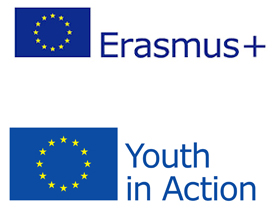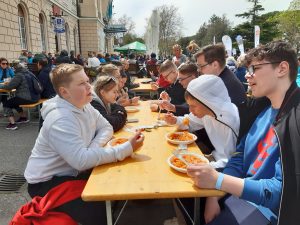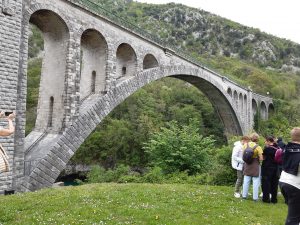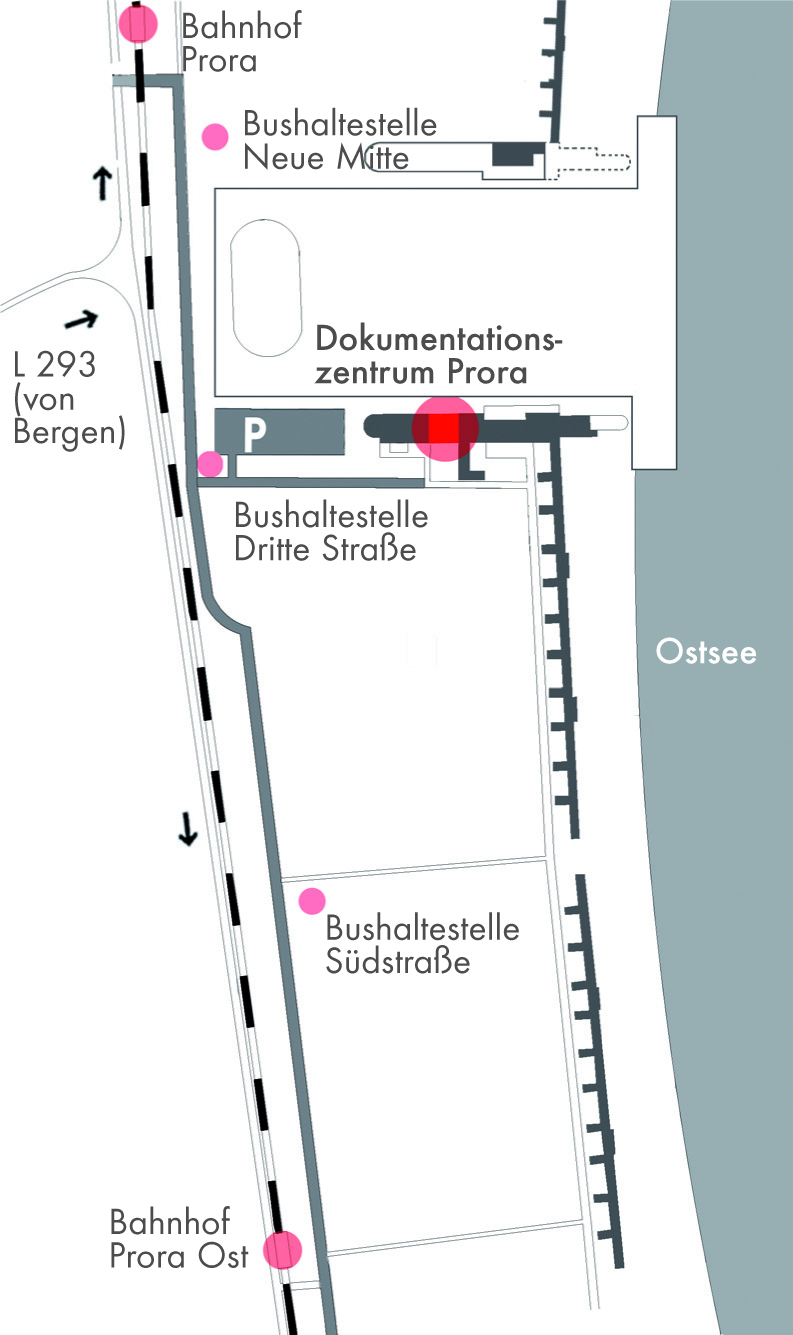project meja-border
The follow-up project “Meja – Border” took place successfully for one week in spring 2023 as part of the series of projects “طخ / دودحلا – Border Line – Meja / Linje”. It was implemented within the framework of the “Erasmus+ / Youth in Action” program together with our European partners.
This time, the Slovenian partner LUNG – the People’s University of Nova Gorica – was the coordinator and organizer of the project and invited us to Nova Gorica/Gorizia.
Our partners:
• LUNG, People’s University in Nova Gorica
• Associazione Culturale Quarantasettezeroquattro in Gorizia
• Istituto Salesiano Bearzi, Udine
• MS 5 – Secondary School for Klagenfurt am Wörthersee–Wölfnitz
• Regionale Schule Sassnitz
A special thanks goes to Mojca (LUNG), who put together a very interesting program over the course of the week, Suzana (Gymnasium Nova Gorica), Marko (Goriški Muzej), and Alex (Associazione Culturale Quarantasettezeroquattro).
The Project
Following the previous project, this time young people from Slovenia, Italy, Germany, and Austria, boys and girls aged between 13 and 20, came together.
The aim was to make the division of regions and the process of overcoming division tangible at historical sites. The project explored the dissolution of Yugoslavia, the situation during the First World War, during and after the Second World War, and the division of the city in 1947 into a Slovenian Nova Gorica and an Italian Gorizia. It examined how the two cities developed separately yet side by side, divided by a fence, and how they evolved after the Schengen Agreement of 2007, since which the border between Slovenia and Italy can be crossed freely everywhere.
All participants are citizens of European Union member states, yet nationalism and prejudice remain challenges that must still be overcome. In 2025, Nova Gorica and Gorizia will jointly be European Capitals of Culture, alongside Chemnitz.
The young participants were encouraged to explore the different perspectives of local communities as well as those of the other project participants. The challenges of living together today could thus be considered in light of the experiences they had already gained in Berlin and Prora.
The Week of Exchange
After a long journey on April 15, we had the opportunity to take part right on Sunday in the “Walk of Friendship,” a wonderful 12 km walk through Nova Gorica and Gorizia. Fortunately, the group from Rügen had arrived early enough to join. The walk concluded with a well-deserved pasta meal.
In the afternoon, all groups had arrived and met for the first time. As an introduction, we held a small workshop on sign language, continuing the work we had begun in the previous project.


April 17 – Monday
We started Monday with a photography workshop. Whether using a camera or smartphone, the participants learned about settings and composition and practiced in small working groups, both theoretically and practically.
After the workshop, we visited the Cultural House in Gorizia, where a lecture introduced the linguistic traditions of the region and their current distribution. On the way there, we passed through Gorizia’s old town, including an old synagogue in the Jewish quarter.
April 18 – Tuesday
On Tuesday, the day’s topic was “The First World War.” The excursion took us to Kobarid and the Kobariški muzej (Kobarid Museum), where we were given a guided tour.
The turquoise Soča / Isonzo River flows through the picturesque valley.
It was here that the twelfth and final battle of the Soča/Isonzo took place in 1917 — the Battle of Caporetto/Karfreit, today’s Kobarid. Thousands of people died in the bloody trench warfare along the Isonzo Front.
The horrors of the war are still reflected at the Kostnica s Cerkvijo Sv. Antona war cemetery, built in memory of the fallen Italian soldiers.
The beautiful landscape shows no trace of the suffering that once occurred here.

At the museum, a small workshop was held with the young participants, working in mixed groups on the Kobarid Memorial Trail. They explored the question: What significance can such historical traces and the remembrance of past events hold for us today?
April 19 – Wednesday
Synagogue in Trieste – Government Palace at Piazza dell’Unità d’Italia
On Wednesday, the topic turned to Fascism. The day’s program included an excursion to Trieste. There, the Italian project partner Associazione Culturale Quarantasettezeroquattro (47/04), led by Alex, provided a city tour focusing on Jewish life in Trieste through different historical periods.
The tour covered the city’s history from the Austro-Hungarian Empire to the Second World War, beginning at the harbor, continuing to the Piazza dell’Unità d’Italia (Square of Unity), and then to the synagogue, built at the beginning of the 20th century — one of the most significant Jewish houses of worship in Europe. In 1942, it was closed by the Fascists and reopened after the war.
The tour also passed by the Narodni Dom, which until the First World War had been the cultural center of the Slovenian community in what was then part of the Austro-Hungarian Empire. Today, the building houses the University of Trieste. The route continued to the Roman Theater and Piazza Oberdan, named after Guglielmo Oberdan, a supporter of the pan-Italian movement who attempted to assassinate Emperor Franz Joseph during his visit to Trieste in 1882 as a protest against the Habsburg monarchy. The emperor was unharmed, Oberdan was executed, and later celebrated as a martyr.
After the German occupation, one of the buildings at Piazza Oberdan served as the Gestapo headquarters, containing torture cells and a prison. Other Gestapo centers were scattered throughout the city.
 Finally, we visited the Rižarna – Civico Museo della Risiera di San Sabba Monumento Nazionale, the National Memorial and Museum of the San Sabba Rice Mill, the only Nazi concentration camp in Italy equipped with a crematorium. Up to 25,000 people were imprisoned there — political prisoners, partisans, and Jews awaiting deportation to extermination camps.
Finally, we visited the Rižarna – Civico Museo della Risiera di San Sabba Monumento Nazionale, the National Memorial and Museum of the San Sabba Rice Mill, the only Nazi concentration camp in Italy equipped with a crematorium. Up to 25,000 people were imprisoned there — political prisoners, partisans, and Jews awaiting deportation to extermination camps.
The estimated number of prisoners murdered in the Trieste camp ranges between 3,000 and 5,000.
April 20 – Thursday
The day’s topic focused on the border demarcation in the Goriška region following the Second World War — when one city became two: Nova Gorica and Gorizia.
We visited two museums on and across the border: the Museum Collection Kolodvor at the Nova Gorica train station, and the Museum Collection Pristava, located in the former border control station at Pristava. We received an engaging guided tour through Gorizia and visited the Italian museum “Lasciapassare / Przepustnica,” which documents the history of the border.
In the afternoon, we had the opportunity to watch a documentary film in Nova Gorica about smuggling along the border between Nova Gorica and Gorizia. Local residents shared candid stories about how they managed to smuggle everyday goods, such as food, across the border. The director, Anja Medved, later joined our workshop and answered the participants’ questions.
The working groups (AGs) then discussed ways to document the encounter and present their newly gained impressions and historical insights.
In the evening, we attended a cultural performance by students from the Nova Gorica Gymnasium, held as a benefit event for young students. The program was excellent and left a strong impression on all participants of our youth exchange project.
April 21 – Friday
Friday began with a small sign language workshop. All participants learned and performed a verse and chorus of John Lennon’s “Imagine” in sign language — a true highlight of the week.
 Afterward, we enjoyed a guided tour of Nova Gorica followed by a beautiful hike along the banks of the Soča/Isonzo River.
Afterward, we enjoyed a guided tour of Nova Gorica followed by a beautiful hike along the banks of the Soča/Isonzo River.
In the working groups, the participants then selected and curated photographs for an exhibition to be shown in the LUNG premises.
In the evening, our Slovenian partners organized a farewell celebration at our hotel for all participants. Some Slovenian participants from the previous project also joined — a wonderful conclusion to an inspiring week.
April 22 – Saturday
On the final day, the participants worked intensively on their documentation projects.
By midday, it was time to depart, and all groups began their journey home.
At the end of the project, a small photo exhibition was created, now on display in the LUNG facilities.
The youth exchange was eventful and inspiring, leaving many lasting impressions that will stay with the young participants for a long time.
We look forward to the next exchange!


